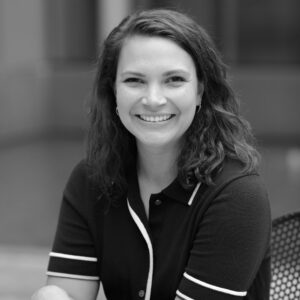The Joseph Beuys Tree Partnership
20th Anniversary Oral History Collection
This collection of oral histories was created to preserve the experience and expertise of those involved in the creation and maintenance of the four parks that make up the Joseph Beuys Tree Partnership. In the 20+ years since its inception, the Joseph Beuys Tree Partnership (JBTP) has planted 350 trees and placed several stones, thanks to the work of over 500 people in Baltimore Parks and on the University of Maryland, Baltimore County campus. The parks that make up the Tree Partnership also serve as the background and muse for countless public programs for school children and adults, and as a place of reflection and rest in the middle of bustling Baltimore City. The Joseph Beuys Tree Partnership was created in the year 2000, inspired by the 7,000 Oaks that artist Joseph Beuys started in Kassel, Germany in 1982. Renee Van der Stelt, then registrar at the Center for Art, Design, and Visual Culture, approached the organization then known as TKF (now Nature Sacred) for a grant to aid in this project which reflected Beuys’ ideas of urban environmentalism and art in public spaces. The city parks: Carroll Park, Patterson Park, and Wyman Dell, were picked specifically for their individual strong community organizations, and for their position as a green oasis in busy parts of the city.
The Joseph Beuys Tree Partnership was inspired by the German artist, Joseph Beuys’ (1921-1986) project, 7,000 Oaks: City Forestation Instead of City Administration, in which he planted 7,000 Oak trees in Kassel, Germany. Beuys was a prolific performance artist and very influential artist in the mid-twentieth century. He was born into a Germany falling into fascism, and thus, like many other German children of his generation, took part in the Hitler Youth and eventually served in the German Air Force during World War II. He was a sculpture professor at a college of art in Dusseldorf and had his art in galleries around the world. However, his most influential contribution might be his concept for social sculpture, which presents the idea that art and society are intrinsically linked. He believed that every human was an artist, and that with intention, every action can be art. These artists and their art combined make society. To Beuys, art had the power to change society, and this is exemplified in his work 7,000 Oaks. In 1982, Beuys was asked to create a piece for Documenta, a contemporary art exhibition in Kassel, Germany. Beuys presented a large pile of basalt stones and declared that not one stone would be moved until a tree was planted in its new location. It took years and lots of volunteers, but all the trees were planted by 1987. The idea is that the rock slowly deteriorates, allowing its minerals to be absorbed by the tree next to it. The trees were planted by local volunteers, exhibiting the participatory nature of social sculpture that Beuys thought was imperative to positively shaping society.
The Joseph Beuys Tree Partnership has created a life of its own in the Baltimore metropolitan area over the past 20 years. The parks, and the trees within them, give visitors a much-needed reprieve from city life and a space of reflection. This collection of oral histories serves as a reminder of the hard work, passion, and care that went into the planning, creation, and maintenance of all the moving parts that is the Joseph Beuys Tree Partnership.
Tom Stoner [he/him] recorded on 8/11/2021
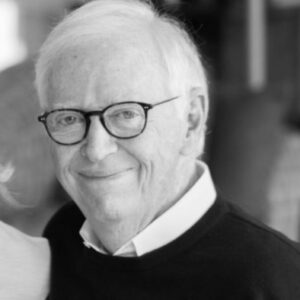 Listen to Part 1 of Tom Stoner’s oral history here.
Listen to Part 1 of Tom Stoner’s oral history here.
View Part 1 of Tom Stoner’s oral history transcript here.
Listen to Part 2 of Tom Stoner’s oral history here.
View Part 2 of Tom Stoner’s oral history transcript here.
Tom Stoner is the co-founder of Nature Sacred, along with his wife, Kitty Stoner, which at the time was known as TKF. TKF was the organization that allowed the Joseph Beuys Tree Partnership to become a reality, after being approached with the idea by Renee van der Stelt. Stoner has always had a great appreciation for art, nature, and sustaining the environment, which are all big motivators behind the work he has done in his long career. In this interview, we discuss his thoughts on this massive project that was one of the first his foundation took on. Twenty years later, the model created during the JBTP has helped Nature Sacred create hundreds of Sacred Places across the country. Tom’s passion for art, the environment, and public sacred space drive the goal of not only Nature Sacred, but the Tree Partnership.
Alden Stoner [she/her] recorded on 8/14/2021
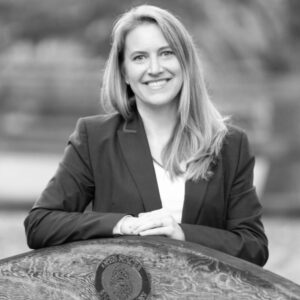 Listen to Alden Stoner’s oral history here.
Listen to Alden Stoner’s oral history here.
View the transcript of Alden Stoner’s oral history here.
Alden is the daughter of Kitty and Tom Stoner and currently serves as Nature Sacred CEO. Her connection to the JBTP began on the sidelines before she was even fully graduated from undergrad. Initially, she came to intern at TKF, and worked with Renee van der Stelt on public programming, and collecting information from the Sacred Place journals. Her background and passion for storytelling amplify the passion for nature she holds, and it shows in her work. Twenty years later now as CEO of Nature Sacred, projects like the Tree Partnership are increasingly important to her work as the structure of this project influences others like it across the country. Discussed in the interview is the impact of the JBTP on Nature Sacred today.
Renee van der Stelt [she/her] recorded on 6/17/2021
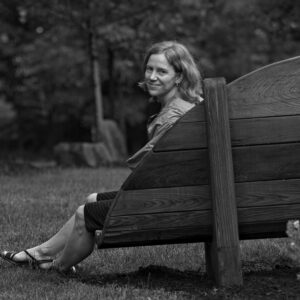 Listen to Renee van der Stelt’s oral history here.
Listen to Renee van der Stelt’s oral history here.
View the transcript of Renee van der Stelt’s oral history here.
Listen to an interview with Renee van der Stelt and Tom Stoner here.
View the transcript of Renee van der Stelt and Tom Stoner’s interview here.
Renee van der Stelt was the spark that ignited the Joseph Beuys Sculpture Park. Her previous knowledge and appreciation of Joseph Beuys began when working previously at the Walker Art Center in Minneapolis with its large collection of Beuys multiples. Van der Stelt discussed Beuys as an artist, what attracted her to his work and philosophies about art, while also knowing others have been critical of as a person. Together, we discussed her time at UMBC and how this project went from an idea about how art often emerges from people’s creative actions in their lives to four parks across the Baltimore area that have thrived for the past twenty years. She shared the different steps, challenges, and triumphs that came with completing this project as well as some behind-the-scenes insights into how it felt to be part of a small team doing big work. Van der Stelt departed from her position at UMBC in 2008, but for over seven years served as Registrar while also curating an exhibition and running varied education and public programs, tree plantings, and more.
Symmes Gardner [he/him] recorded on 6/14/2021
 Listen to Symmes Gardner’s oral history here.
Listen to Symmes Gardner’s oral history here.
View the transcript of Symmes Gardner’s oral history here.
Symmes Gardner, director of CADVC, has been working at UMBC for thirty years, and was instrumental in the development of the Joseph Beuys Sculpture Park, and is one of its biggest fans to this day. His mindset as an artist is obvious in the interview as we discussed the park as art as well as community space. We discussed what public environmental art means in a modern world, and how that differed from Joseph Beuys’ time. Gardner was very proud of the Center’s role in the development as well as maintenance of the Joseph Beuys Sculpture Park, and highlighted how the park’s mission and the mission for the CADVC overlap greatly. Gardner also discussed the student’s relationship with the sculpture garden, and how special it is to both the university as well as the surrounding community.
Chris Ryer [he/him] recorded on 8/27/2021
 Listen to Chris Ryer’s oral history here.
Listen to Chris Ryer’s oral history here.
View the transcript for Chris Reyer’s oral history here.
Chris Ryer today works as the director for Baltimore City Department of Planning, but he got his start in community planning. Chris Ryer was a community planner in the Washington Village/Pigtown Neighborhood Planning Council, whose jurisdiction included Carroll Park. In the 1990s and early 2000s, Ryer was working on revitalization projects within Carroll Park when Renee, a fellow resident of Pigtown at the time, approached him with the idea to bring the Joseph Beuys Tree Partnership to the Park. Enthusiastic about increasing the tree canopy of the park and getting residents in the formerly neglected neighborhood park, Ryer said yes. Dozens of volunteers came to plant trees at the park, which Ryer continues to visit and feel proud of. In this interview, we discuss how his history in community planning impacts his work today, along with how connecting with the earth and each other can be important to communities.
Sandra “Sandy” Sparks [she/her] recorded on 8/10/2021
 Listen to Sandy Spark’s oral history here.
Listen to Sandy Spark’s oral history here.
View the transcript for Sandy Sparks’s oral history here.
In 1983, Sandy Sparks helped found the Friends of Wyman Dell and has continued active involvement with the non-profit organization. As founder of the Friends of Maryland’s Olmsted Parks & Landscapes (1986), she responded on behalf of the FWPD to the Joseph Beuys Tree Partnership Project in Wyman Park Dell in 2001. In this interview, Sandy reminisces on her involvement with her neighborhood park, and how the Beuys Partnership aids in the goal of the Olmsted Brothers’ original design of this 16-acre park, fronting the Baltimore Museum of Art. Her advocating for Baltimore’s Olmsted Brothers park system (1904) was central to the Baltimore City aspect of the Joseph Beuys Tree Partnership. Sparks’ decades of volunteer work nurturing community green spaces and urban forestry cannot be overstated.
Nancy Supik [she/her] recorded on 6/16/2021
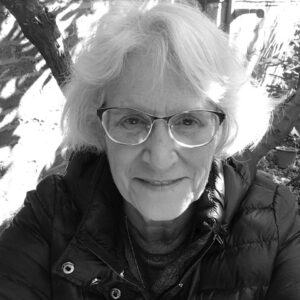 Listen to Nancy Supik’s oral history here.
Listen to Nancy Supik’s oral history here.
View the transcript for Nancy Supik’s oral history here.
Nancy has lived in the area surrounding Patterson Park for over 45 years. Her involvement began as a volunteer, eventually becoming the first paid employee of the Friends of Patterson Park. She was a main point of contact for the Tree Partnership while it was being built, and coordinated the tree planting event, which resulted in 100 trees being planted in one day, with over one thousand following in the subsequent two decades. Her dedication to the Friends of Patterson Park for the last 25+ years has been a major reason why the park is the way it is today. We discuss her history with the park, as well as the project, why its goals are important, and volunteer planting.
Charlie Hogan [he/him] recorded on 6/10/2021
 Listen to Charlie Hogan’s oral history here.
Listen to Charlie Hogan’s oral history here.
View the transcript for Charlie Hogan’s oral history here.
Charlie Hogan, currently Landscaping Grounds Manager at UMBC, has been working at the University for 23 years. Hogan has been involved in the landscaping of the Joseph Beuys Sculpture Park from the very beginning, from the time it was a part of the wooded knoll to the current day. He was involved in planting the original trees, and still, twenty years later, maintains his work and keeps the park healthy. In this interview, Hogan discussed the park in terms of its arboriculture, maintenance, and sustainability. Sustainability is a very important topic to Hogan, who discussed the importance of maintaining the integrity of nature. We also discussed student interaction, both positive and negative, with the sculpture park and how it compares to other areas of campus. Being an arborist gives Hogan a special perspective in this study, and the way that he discusses his transition from considering this park as a typical landscape project to art installation shows a growing appreciation for environmental art.
Martha Waldron [she/her] recorded on 8/4/2021
Listen to Martha Waldron’s oral history here.
View the transcript for Martha Waldron’s oral history here.
Martha Waldron, current President of Friends of Wyman Dell, was not active in the organization at the time the JBSP was created. However, she gave a modern context to the park’s position in the community, specifically touching on the area immediately surrounding the Joseph Beuys installation, which formerly contained a monument honoring the Confederacy, which has now been re-dedicated as Harriet Tubman Grove. Waldron discusses the Friends’ plans to uplift this new chapter in the park’s history, which also includes the Joseph Beuys Project.
Jennifer Arndt Robinson [she/her] recorded on 8/16/2021
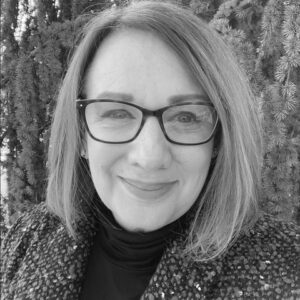 Listen to Jennifer Arndt Robinson’s oral history here.
Listen to Jennifer Arndt Robinson’s oral history here.
View the transcript for Jennifer Arndt Robinson’s oral history here.
Jennifer Robinson has been the executive director of the Friends of Patterson Park since 2013. Before that, she worked at UMBC’s Shriver Center and was thus familiar with the Joseph Beuys Sculpture Park on campus. When she began her position at the Friends of Patterson Park already with this knowledge, it made it all the more meaningful to her. In this interview, she discusses her history of connections with the Tree Partnership as well as what aligns the partnership with the goals of the Friends of Patterson Park, and what the future for the Partnership holds within Patterson Park.
